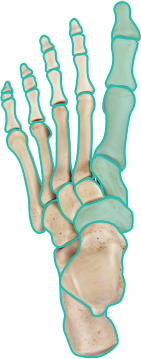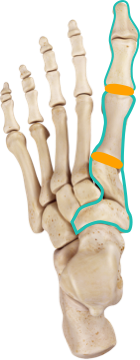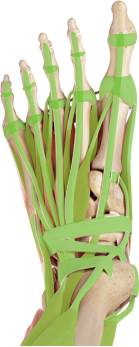
Surgery Conundrum
If doctors can’t agree on a pathology for bunions, how can they agree on a corrective solution? In the past century, over 150 different techniques have been developed to treat the hallux valgus deformity. Not one technique has worked to universal satisfaction, which makes patient’s pursuit of knowledge and understanding unusually difficult. A simple search online shows infinite results with unspecific, sometimes contradictory information.

Why are there so many different corrective surgeries?
The simple answer is no one commonly-practiced corrective surgery has been able to satisfy both doctors’ and patients’ expectations.
A bunion is graded as mild, moderate, severe or extreme according to the angles and displacement of affected bones in the foot. The American Academy of Orthopaedic Surgeons proposes a matrix of numerous surgeries to suit different levels of severities along the spectrum.
Due to limitations and complications of each technique, surgeons are taught to believe there is no one-size-fits-all surgery. They are required to perform in 3-4 different techniques in order to manage all severities. With a pool of 150 total and currently more than 15 commonly-practiced procedures to treat just one single condition, it’s common for patients to receive conflicting surgical recommendations when consulting different doctors.
There is perhaps no other surgical condition that elicits such diversity in opinions.
What are the types of corrective Surgeries?
The complexity of the condition has bred complexity in surgical approaches, with surgeons exploring techniques that affect either the bones, joints, or soft tissues of the foot.

Bone procedures
An osteotomy is the original 'break-n-shift' concept that cuts and shapes the bone in different locations. A surgeon selects a cutting method depending on the severity of the condition and their training. Strictly speaking, a bunionectomy cuts away the protruding metatarsal head, often including part of the typical big toe joint, for the purpose of narrowing the forefoot. An exostectomy only shaves down abnormal bone spurs without infringing on the normal joint. The more recent minimally-invasive techniques follow the same concept as osteotomy procedures, only the incision is smaller.

Joint procedures
Arthrodesis, joint fusion, procedures are designed to realign and fix displaced bones by cutting out the joint (bones, cartilage and ligaments) in order to fuse its adjacent bones together. Most new joint fusion procedures are interpretation of the Lapidus procedure, often introducing new instrumentation and implants to aid in shaping and fixing the cut.

Soft tissue procedures
The McBride procedure was the first technique that attempted to correct the condition by soft tissue manipulation alone. Unfortunately, it was proven ineffective, and it is now only performed to supplement other primary procedures. Although Syndesmosis Surgery belongs to this minimally-traumatic category, it is the only stand-alone technique that has been proven to naturally generate a new ligament to replace incompetent ones for recurrence prevention. Later the Tight-rope procedure attempted the same no-bone-cutting concept with a minimally-invasive technique that relies on synthetic sutures for recurrence prevention.